Phillip Lujan and Natalie P. Goldberg
College of Agriculture, Consumer and Environmental Sciences, New Mexico State University
Respectively, Program Manager, New Mexico State University; Distinguished Extension Specialist Emeritus, New Mexico State University. (Print Friendly PDF)

Figure 1. Phytophthora root rot-infected rows of chile.
New Mexico produces some of the finest chiles in the world. The hot, dry summer climate is ideal for the production of many chile pepper varieties and is especially suitable for the production of “hot” chiles. The production of peppers, however, is not without problems. Chile peppers (Capsicum spp.) are susceptible to several diseases that can cause excessive losses, both in quality and quantity.
Plant disease occurs when some external factor disrupts the “normal” growth and development of the plant. Many different parasitic and non-parasitic disease agents can cause disease in peppers. Parasitic diseases are caused by infectious disease agents that can spread rapidly from one plant to another under the right environmental conditions, potentially causing an epidemic. Non-parasitic diseases are caused by abiotic disorders and are related to nutrients, chemicals, and the environment. This publication will address the most common problems associated with chiles grown in New Mexico. In addition to some specific control measures for diseases, there is a checklist of general control practices for growing disease-free chile.
Table of Contents
Parasitic Diseases (caused by infectious disease agents)
Wilt and Root Rot Diseases
Three common soil-borne organisms cause severe wilt and root rot diseases in chile. These fungi can cause similar symptoms, most notably severe wilting and plant death, and at times may be confused with one another. Often accurate diagnosis of the disease depends on isolating and identifying the causal agent; however, there are some differences in symptom expression, and knowing these differences can be helpful in diagnosis and control.
Phytophthora Root Rot
Phytophthora root rot, also called “chile wilt,” is caused by the soil-borne pathogen Phytophthora capsici. This fungal-like organism is a serious pathogen on peppers worldwide, but the disease is particularly widespread in furrow-irrigated fields in the southwestern U.S.
Conditions for disease:
This pathogen causes a problem when soils are excessively wet, either from over-irrigation, heavy rains, or both. Disease outbreaks usually occur in heavy soil or in low spots in the field where water tends to sit for long periods of time. It is not uncommon to see fields where diseased plants are grouped together in particular areas of the field, in specific rows, or at one end of the field, while the remainder of the plants may be healthy and show no indication of disease (Figure 1, cover image). When disease occurs in particular rows, this often indicates excessive irrigation and the spread of infectious spores by the irrigation water. In addition, chile plants grown next to tall trees or buildings may become diseased due to shading, which causes high humidity and slow drying, favoring activity by the pathogen.
Symptoms: Symptoms of Phytophthora root rot usually occur in the late summer and early fall during periods of heavy rainfall and warm nights, and when the foliage is dense and plants become crowded. The first symptom of infected plants is severe wilting. Within a few days, infected plants collapse due to root and stem infections and die, turning straw-colored (Figure 2). In many cases, plants are defoliated. Diseased plants removed from the field exhibit symptoms of severe root rot, such as discolored, dead roots from which the bark sheds easily (Figure 3).
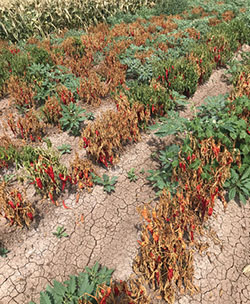
Figure 2. Phytophthora root rot-infected plants, field symptoms.

Figure 3. Phytophthora root rot-infected root and stem.
Phytophthora capsici also causes diseases called spots, blights, and fruit rots on the leaves, stems, and fruit. Above-ground infections generally occur during the summer rainy season at elevations above 3,500 feet. Infections result when rain splashes infested soil onto water-soaked stems and leaves. Fruits become infected when wet, humid conditions persist for several days. (For more information on fruit rots, see the following section on fruit rots.)
Control: Excessive soil moisture triggers and intensifies the crown and root rot stage of this disease. If possible, avoid poorly drained, heavy soils. Cultural practices that reduce the length of time that soil remains saturated will help reduce disease incidence. These practices include proper field leveling (laser leveling with a slight slope will remove low spots and help water move down the rows), planting in raised beds, irrigating every other row when plants are immature, shorter irrigation periods, and shorter row length.
Phytophthora capsici survives in crop debris and soil as oospores, which can persist for years even without the host present. Research indicates that 3- to 4-year crop rotations out of peppers and other susceptible hosts, such as tomatoes and alfalfa, can reduce residual populations of the fungus in the field. Suggested rotational crops include lettuce, cabbage, onions, and small grains, such as wheat, barley, and oats.
Chemicals have not proven very effective in controlling this disease. Metalaxyl is registered for use on peppers to control root and crown rots; however, once a plant is infected, metalaxyl will not cure a plant of the disease. There are no chemicals recommended for the above-ground spots and blights.
While chile breeders continue to strive for cultivars tolerant to Phytophthora capsici, there are, as of yet, no cultivars highly tolerant to this disease.
Verticillium Wilt
Verticillium dahliae is a soil-borne fungus that occurs worldwide and causes diseases in a diverse group of plants. Susceptible hosts include several weed species and many crops grown in New Mexico, including chile, cotton, alfalfa, melons, and ornamentals. Like Phytophthora root rot, Verticillium wilt is primarily a problem in temperate climates.
Conditions for disease: Verticillium dahliae survives in soil and crop debris as specialized structures called microsclerotia. These structures enable the fungus to tolerate extreme environmental conditions and lie dormant in the soil for many years in the absence of a susceptible host. In the presence of moisture, root exudates of susceptible plants stimulate microsclerotia germination. The fungus directly penetrates the roots and subsequently moves through the root cortex to the water-conducting xylem tissue. The xylem becomes plugged with the fungus, leading to above-ground disease symptoms.
Symptoms: Symptoms of Verticillium wilt are highly variable, depending on the susceptibility of the host, the aggressiveness of the pathogen, and the environmental conditions, especially related to air and soil temperature and available nutrients. Early symptoms include yellowing of lower leaves and plant stunting (Figure 4). As the disease progresses, excessive yellowing and leaf shedding may occur. This fungus is restricted to the internal vascular tissues of the stems and therefore causes no rot of the roots or the crown. However, varying degrees of browning may occur in the xylem tissue (Figure 5). As the water-conducting tissues are plugged by the fungus, the plant will wilt due to water stress. Infected plants may recover at night for a few days before permanent wilting and death occur. This disease may occur sporadically throughout the field, thus creating a poor stand (Figure 6).
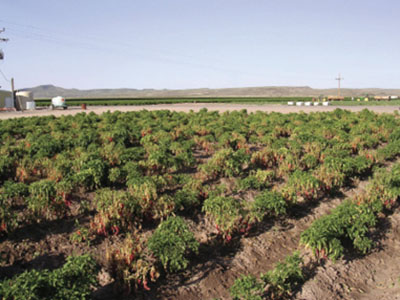
Figure 4. Verticillium wilt-infected plants, field symptoms.
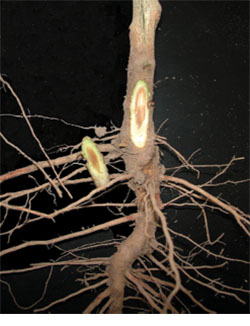
Figure 5. Verticillium wilt, vascular discoloration.
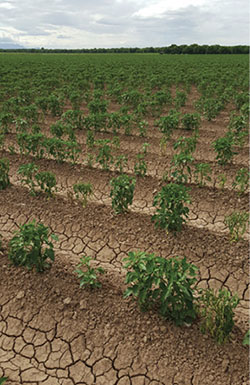
Figure 6. Verticillium wilt, poor chile stand.
Control: There are no adequate control measures known once Verticillium wilt appears in the field. Control strategies targeted at avoiding the disease are most effective. Although Verticillium dahliae has a wide host range, it occurs in races (genetically and often geographically distinct groups of pathogens that may infect certain plant species), so all isolates of the fungus may not attack all hosts. Observations of the disease indicate that Verticillium wilt tends to be most severe in fields where chile is planted continually. Experimental data suggests that New Mexico has a complex population of Verticillium, with several races. Observations of the disease in Arizona indicate the population is capable of infecting cotton as well as chile; thus, avoiding cotton fields with a history of the disease may help reduce disease incidence. Crop rotations where chile is not planted more than once every 3–4 years is recommended. Using barley or other small grains may help reduce the population of microsclerotia in the soil and thus reduce the incidence of disease when a susceptible host is planted.
Soil fumigants containing chloropicrin have effectively controlled Verticillium wilt in many crops, but they may not be economically feasible in chile. To date, there are no known chile cultivars tolerant to Verticillium dahliae.
Rhizoctonia Root Rot
Rhizoctonia solani is a common soil-borne fungus that infects many vegetables and agronomic crops. This pathogen is a common cause of seedling disease (described in detail in the following section) and, less commonly, infects mature plants, where it causes symptoms similar to Phytophthora root rot and Verticillium wilt. A laboratory test is needed to determine the specific causal agent. New Mexico State University’s Plant Diagnostic Clinic (http://aces.nmsu.edu/ces/plantclinic/) can help growers distinguish between them with disease identification.
Conditions for disease: Rhizoctonia solani infection is thought to occur in early spring during the seedling stage of growth. If environmental conditions are less than optimal for the fungus, the plant may continue to grow while infected. Plants infected with Rhizoctonia root rot have reduced vigor compared to non-infected plants. In the summer when the plant is mature, stresses like excess heat, drought, and fruit set cause infected plants to wilt. This disease is most severe in fields that are planted in chile year after year, although it should be noted that other crops such as cotton and alfalfa are also susceptible to this fungus. Additionally, this fungus has a tremendous capacity for saprophytic growth and can survive in the soil indefinitely in the absence of a host plant.
Symptoms: Rhizoctonia solani attacks plants on the lower stem near the soil. The fungus moves up and down the stem while the tap root rots, developing a reddish-brown lesion at the soil line and causing vascular discoloration (Figure 7). These reddish-brown lesions are a diagnostic characteristic for this disease. Diseased plants often produce an abundance of secondary roots above the rotted tap root, but wilting and death of plants scattered throughout the field are the most noticeable symptoms of Rhizoctonia root rot. Wilted plants may recover at night unless high temperatures persist. In addition, providing adequate soil moisture may prolong the life of infected plants. Once a plant is infected, however, its vigor is greatly reduced and production is poor.
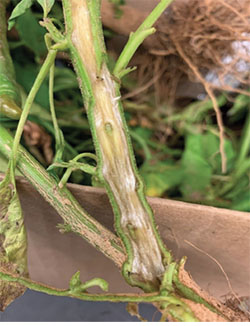
Figure 7. Rhizoctonia root rot, vascular discoloration.
Control: Specific control measures (other than seed treatments explained in the following section) are not usually recommended for Rhizoctonia root rot. There are no resistant chile cultivars.
Seedling Disease
Seedling disease, commonly called “damping off,” can be caused by a number of soil-borne organisms such as Rhizoctonia solani, Phytophthora capsici, Pythium spp., and Fusarium spp. Damping off occurs when seeds or young seedlings are attacked by these pathogens. Seeds attacked by these fungi usually fail to germinate. Seedlings can be damaged in two ways: the roots may rot and cause the seedling to wilt and die quickly, or the seedling may be attacked on the stem at the ground line, causing the seedling to collapse (Figure 8). Although both seeds and seedlings can be attacked by these fungi, direct-seeded chile tends to be more susceptible than chile transplants. When fields suffer from severe damping off, regardless of the pathogen or the growth stage of the plant, the result is poor stand development (Figure 9).
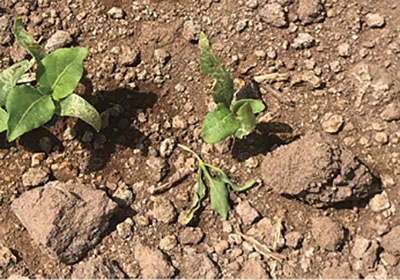
Figure 8. Seedling disease (damping off).
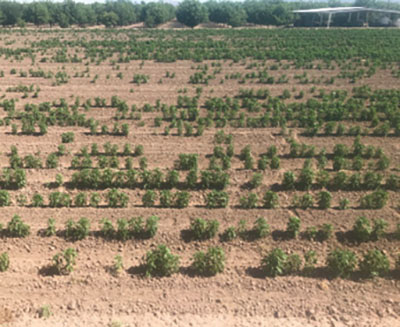
Figure 9. Seedling disease, poor stand development.
Seedling diseases usually develop during cold, wet periods in the spring after planting. In addition to damping off, these conditions delay seedling growth, which keeps the plants susceptible to attack for a longer period of time. Excessive irrigation prior to emergence increases disease severity. Damping off can also be a problem in raising transplants in the greenhouse, where high humidity and frequent overhead watering favor seedling diseases. To reduce inoculum in the greenhouse, raising transplants in sterile soil or potting mix is recommended.
Additional causes of seedling loss include poor seed quality, improper planting depth, high salt concentrations in the seed bed, strong winds, over-irrigation, severe nutrient deficiencies or toxicities, pre- and post-plant herbicide applications, and insects. In order to prove that soil-borne organisms are involved in seedling disease, it is necessary to eliminate these other non-parasitic problems. Observing the distribution pattern of seedling loss in the field is extremely helpful in accurately diagnosing the problem. For example, if the disease occurs in rows or in a specific area of the field, the cause is most likely a non-parasitic disorder (discussed later in this publication). Alternatively, if the disease is scattered throughout the field, pathogenic organisms are the likely cause. The earliest symptom of damping off is the failure of seedlings to emerge (or seedling death) for a short distance in the seed bed. These infected locations then enlarge, creating a scattered disease pattern in the field. Good observations of symptoms and disease patterns in the field are essential for diagnosis; however, the only positive method of determining the cause of seedling disease is isolating the fungus from diseased tissue.
In order to prevent seedling diseases, plant only high-quality seed or transplants and avoid fields and seed beds that are poorly drained. Seed treatment with fungicides helps protect seeds from pre-emergence damping off.
Leaf Diseases
Parasitic leaf diseases can be caused by fungi, bacteria, or viruses (discussed in a separate section). The following leaf-infecting pathogens are found on chile in New Mexico.
Bacterial Leaf Spot
This bacterial disease, caused by Xanthomonas campestris pv. vesicatoria, occurs worldwide and has been found periodically in most of the chile-growing areas of the state. Disease epidemics can occur during particularly favorable environmental conditions (overhead irrigation or heavy rainfall) and can result in significant crop losses.
Conditions for disease: This bacterium survives in seed, on infected crop debris in the soil, and in weeds. Outbreaks of bacterial leaf spot usually occur in July and August during periods of warm temperatures and humid, wet weather. While all above-ground plant parts can be infected by this bacterium, fruit infections tend to be the most damaging from an economic standpoint. The bacterium enters the leaves and stems through stomata or wounds, and enters fruit through wounds as well. It is spread from one plant to another by splashing water (either from overhead irrigation or rain), wind, or plant-to-plant contact. Disease severity depends on the level of resistance within the cultivar and favorable environmental conditions (moisture and temperature).
Symptoms: Bacterial leaf spot appears as circular to irregular water-soaked lesions on leaves and stems (Figure 10). As the spots age, they become purplish-gray with a black center and are surrounded by a narrow yellow halo. Infections tend to appear more frequently in the lower canopy, where infected leaves become ragged and eventually turn brown and fall from the plant (Figure 11). Severe infections can result in defoliation of the plant. Flower infection results in severe blossom drop. The disease appears on the fruit as small, roundish, raised, dark, scabby lesions.
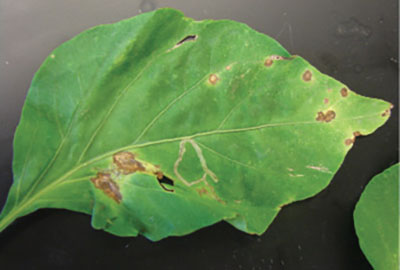
Figure 10. Bacterial leaf spot, foliar symptoms.
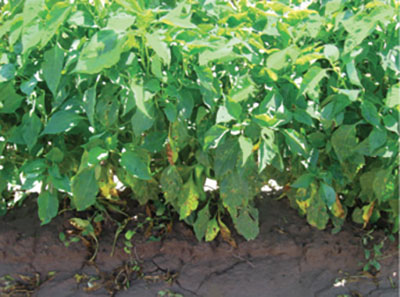
Figure 11. Bacterial leaf spot, field symptoms.
Control: Initial control of bacterial leaf spot relies on planting resistant cultivars and using disease-free seed and transplants. Purchase only high-quality seed that has been screened for the presence of the pathogen. Seed treatment in a 20% bleach solution for 40 minutes is recommended in areas with a history of bacterial leaf spot. Use 1 gallon of water per pound of seed, and be sure to agitate the seed continually while soaking. After washing, air dry promptly. Check seed sources for cultivars resistant to Xanthomonas campestris pv. vesicatoria. Crop rotation is also important in reducing the occurrence of epidemics.
Copper-based chemicals, such as copper hydroxide, copper sulfate, and copper ammonium carbonate, can be effective in controlling this disease. These materials are best applied with a spreader sticker as foliar sprays prior to the rainy season. These sprays can also be applied when the disease threatens to spread in the field; however, the effectiveness of these sprays is dependent on dry weather. It is also important to understand that some strains of this bacterium are resistant to copper-based chemicals, which may not be effective in controlling disease caused by certain strains of the bacterium.
Bacterial leaf spot can infect many solanaceous weeds, including nightshade and groundcherry; thus, controlling weeds near chile fields is also important to control the disease.
Cercospora Leaf Spot
The fungus responsible for this disease, Cercospora capsici, is active during the same environmental conditions that favor bacterial leaf spot. In fact, these two diseases, along with Alternaria spp., are often found together on infected leaves. Alternaria spp. are generally considered to be a secondary pathogen that takes advantage of tissue weakened by these other pathogens. As such, Alternaria spp. are rarely thought of as a leaf pathogen, but they do cause a fruit rot and are discussed in the fruit rot section of this publication.
Conditions for disease: Cercospora leaf spot survives in or on seed, and as tiny black stromata in old affected leaves in the soil. Infection occurs by direct penetration of the leaf. Cercospora capsici spores require water for germination and penetration of the host; however, heavy dew appears to be enough for infection to occur. The disease is most severe during periods of warm temperatures and excessive moisture (either from rain or overhead irrigation). The fungus is spread by splashing water, wind, and leaf-to-leaf contact. Unlike bacterial leaf spot, this pathogen does not infect fruit.
Symptoms: Lesions created by Cercospora capsici are roughly circular in shape; they may be yellowish at first, but quickly turn gray or white a few days after infection, and subsequently turn to dark brown with a reddish margin. A clear to yellowish halo may appear around the reddish-purple margin (Figure. 12). The diseased spots usually dry and fall from the leaf, leaving conspicuous holes. Severely infected leaves turn yellow and drop from the plant.
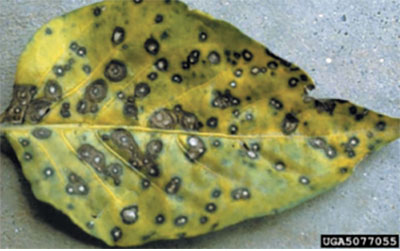
Figure 12. Cercospora leaf spot (photo by David B. Langston, University of Georgia, Bugwood.org).
Control: The same control practices that are used to control bacterial leaf spot are helpful in controlling Cercospora leaf spot. Chile cultivars vary in their susceptibility to Cercospora capsici, but ‘Sandia’ appears to be one of the most susceptible.
Powdery Mildew
Powdery mildew is a common disease in many types of crops, yet the disease is fairly uncommon in New Mexico chile. However, when environmental conditions are favorable, chile has been attacked by this pathogen. The fungus that causes the disease is Leveillula tauric (although the asexual stage of the fungus, Oidiopsis taurica, is typically found).
Conditions for disease: The disease is favored by warm temperatures (from 65–95°F). Although high humidity favors germination of spores, infection can occur during periods of high or low humidity. The fungus reproduces rapidly under favorable conditions. Wind-dispersed spores cause secondary infections, which help spread the disease. The fungus predominately infects leaves, but it can occasionally be found attacking fruit. The disease is most severe on older leaves just prior to fruit set, but can occur at any time throughout the season if environmental conditions are favorable. Severe infections early in the season can result in heavy yield losses.
O. taurica has a wide range of hosts, including cotton, onion, tomatoes, and weeds such as sowthistle and groundcherry. The fungus survives between chile crops on other agronomic hosts and weeds. The amount of inoculum that survives each year depends environmental conditions.
Symptoms: The primary disease symptom is the presence of a white, powdery fungal growth that covers the lower leaf surface (Figure 13). The upper leaf surface of infected leaves may show a yellow or brownish discoloration (Figure 14) and, in some cases, the fungus may actually sporulate on the upper leaf surface. The edges of infected leaves eventually roll upward, exposing the fungus (Figure 15). Infected leaves will drop prematurely from the plant, exposing the fruit to the sun and perhaps causing sunscald on the fruit.
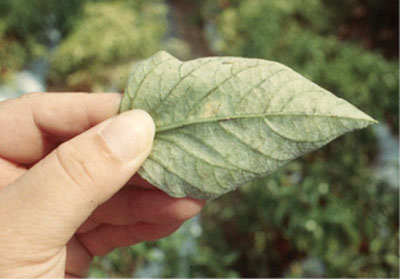
Figure 13. Powdery mildew, lower leaf surface.
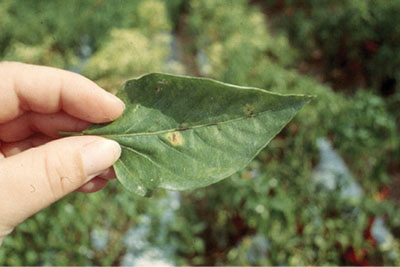
Figure 14. Powdery mildew, upper leaf surface.
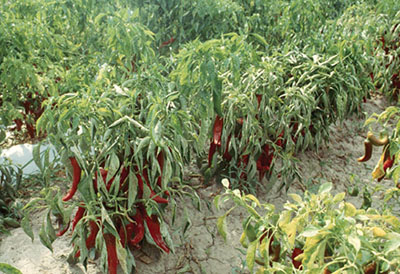
Figure 15. Powdery mildew, field symptoms.
Control: Due to the wide host range of this fungus, sanitation practices (removing and destroying infected crop debris and weed control) in and around chile fields are not always enough to control the disease. Additionally, most chile cultivars do not possess high levels of tolerance to this fungus. Because of these factors, control usually depends on chemical sprays. The effectiveness of these sprays depends on early detection of the pathogen and thorough application coverage. When conditions are highly favorable for the fungus, these sprays may provide only partial control.
Fruit Rots
Fruit rot results from infection by fungi, bacteria, or abiotic disorders (see the Abiotic Diseases section for information on non-parasitic fruit disorders). Some viruses also cause fruit damage; however, the rot that results from these infections is usually caused by secondary fungi or bacteria. Parasitic organisms can attack fruit directly (primary causal agent) or can attack tissue weakened either by another organism or by environmental factors (secondary causal agent). Fruit rots can occur in the field or post-harvest.
Phytophthora Pod Rot
The causal agent of Phytophthora root rot, Phytophthora capsici, also attacks fruit, causing a disease known as Phytophthora pod rot.
Conditions for disease: This disease attacks fruit in the field under high rainfall and high humidity conditions, typical of a southern New Mexico summer rainy season. In these conditions, the fruit becomes water-soaked (Figure 16) and susceptible to attack. Phytophthora capsici is splashed from the soil to the fruit, and infection occurs when the fungus directly penetrates the skin. Fruit lesions usually occur on the ends of the fruit where water and fungal spores tend to accumulate.
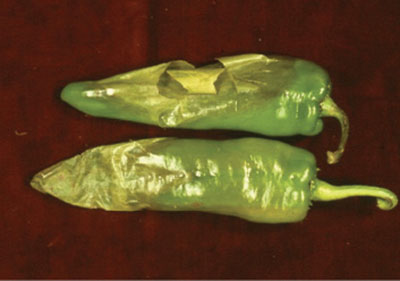
Figure 16. Phytophthora pod rot, water-soaked lesions.
Symptoms: Infected pods shrivel and rot, and white mold (mycelium of the fungus) develops inside the pod (Figure 17). Once inside the fruit, seeds become infested with the pathogen.
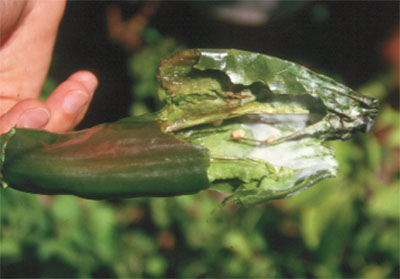
Figure 17. Phytophthora pod rot, white mold inside pod.
Control: The same control practices used to control Phytophthora root rot can help to control Phytophthora pod rot. Fungicide sprays are not effective.
Black Mold
Several fungi cause black mold on chile fruit (Figure 18); however, the most commonly associated organism is Alternaria spp. Black mold is a disease of mature red fruit and may be seen in the field or post-harvest. Field infections occur during periods of excessive moisture late in the season. Excessive fertilization, late irrigations, and early freezes add to the severity of the disease. Black mold may develop on harvested fruit that are not stored in a dry location prior to processing.
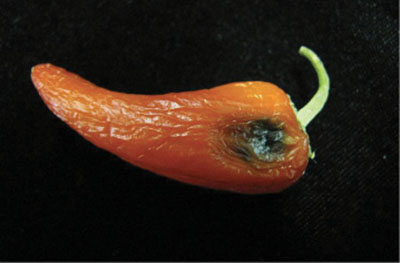
Figure 18. Alternaria black mold on fruit (photo by Cesar Calderon, Cesar Calderon Pathology Collection, USDA APHIS PPQ, Bugwood.org).
Alternaria spp., as well as other black molds, can also cause secondary infections on fruit that has been attacked by primary fungi, bacteria, or viruses or by abiotic disorders such as sunscald or blossom-end rot.
Black mold is controlled by harvesting red chile as soon as possible and avoiding late-season irrigation and fertilization. Harvested chile should always be stored in a dry location.
Anthracnose (Ripe Rot)
Anthracnose, caused by Colletotrichum spp., occurs worldwide wherever peppers are grown. Although the disease is rare in New Mexico, it can be a problem in fields with overhead irrigation. The fungus persists in infected seed, crop debris, and alternate hosts. Infection occurs during periods of excess irrigation or rain on immature pods; however, the symptoms are normally not expressed until the pod becomes mature and completes its final color change.
Symptoms: The symptoms first appear as small, water-soaked lesions that expand rapidly. Fully expanded lesions are sunken and range in color from dark red to tan to black (Figure 19). As the infection progresses, brown to salmon-colored spores appear either scattered or in concentric rings within the lesions. Because this disease attacks immature fruit, infection takes place in the field; however, post-harvest symptom development is also common.
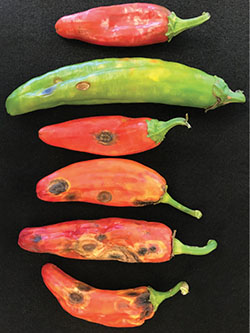
Figure 19. Anthracnose, water-soaked lesions on fruit.
Control: Using clean seed and rotating crops are the two most important control practices. Additionally, fungicide sprays may be helpful for control during favorable environmental conditions.
Bacterial Soft Rot
Soft rot is primarily a post-harvest disease, although occasional field infections have been observed. This disease is caused by the soil-borne bacterium Pectobacterium carotovorum (formerly Erwinia carotovora pv. carotovora). Infections occur during rainy weather when soil containing the bacterium is splashed onto susceptible fruit. High moisture content in the fruit predisposes them to infection by this pathogen. The bacterium enters the plant through any wound, particularly those created by insects or hail. Harvested fruit are infected through the stem end, where crevices tend to hold moisture. Tissue around the infection site begins to soften and eventually turns to a watery mass (Figure 20). Fruit infected in the field tends to collapse and hang on the plant like a water-filled bag. When the contents leak out, the outer skin of the fruit dries and remains attached to the plant. Post-harvest infections are particularly damaging on fresh market peppers because as infected fruit rot in the box, the disease will eventually spread to all fruit in the container.
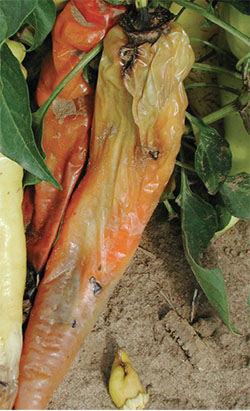
Figure 20. Bacterial soft rot (photo courtesy of Ministry of Agriculture, Food and Rural Affairs, Ontario, Canada).
Field infections are best controlled by managing insects that create wounds for infection. Post-harvest decay is reduced by picking fruit when it is dry, avoiding injury during handling, and cool storage. If fruit is washed after harvest, the water bath should be chlorinated, and the fruit should be dried as quickly as possible to avoid encouraging disease development.
Viruses
Plant viruses are extremely tiny particles of nucleic acid that can cause disease in plants. These particles are not living organisms since they carry out no metabolic processes such as respiration or digestion. However, viruses are considered parasitic infectious disease agents because they reproduce inside their host plant and can be spread from one plant to another by vectors (transmitting agents), such as people, agricultural machinery, propagation tools, insects, nematodes, and fungi.
Control of virus diseases is difficult. No chemicals are available that are effective in controlling viruses; thus, control strategies are designed to prevent infection. While there are several economically important virus diseases of chile, this publication will address the most common virus diseases in chile in New Mexico. However, because new viruses are rapidly being discovered, this section does not include all virus diseases that infect peppers.
Beet Curly Top Virus
Beet curly top virus (BCTV) was first identified in 1899 and to date remains the most important virus disease of many crops, including peppers, melons, beans, tomatoes, spinach, and ornamentals. This virus is transmitted by the beet leafhopper (Circulifer tenellus) (Figure 21). Curly top continues to be successful because it occurs in many strains, and because it infects a wide range of perennial and annual plants. This disease is common in home gardens as well as commercial fields.
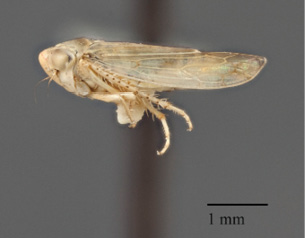
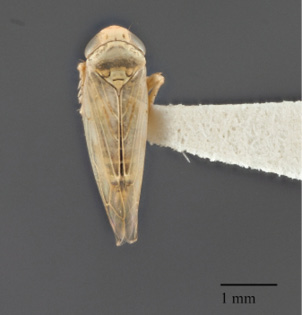
Figure 21. Beet leafhopper (Circulifer tenellus).
Conditions for disease: Leafhoppers build up in high numbers on tumbleweeds and other summer annuals. They survive the winters on winter annuals such as mustards. The disease is most severe when rainfall is abundant in the fall and winter since this supports the growth of the winter annuals. The leafhoppers migrate into cultivated fields and home gardens during the height of the growing season. The virus is then spread from the leafhopper to susceptible plants as the insects feed on the plants.
Symptoms: Peppers of all ages are susceptible to infection by BCTV; however, the disease is more severe when young plants are infected. Infected seedlings exhibit yellowing, curling, and twisting of the foliage. Seedling infection often results in death. The first symptom exhibited when older plants are infected is stunting. As the disease progresses, the symptoms consist of vein clearing, curling, twisting, and puckering of the leaves. In time, the leaves become leathery and stiff (Figure 22). The roots of infected plants gradually die. Infected plants are severely stunted and produce little or no fruit. Early season infection often results in plant death. Plants alive at the end of the season are easily detected in the field because they are quite stunted and yellow (Figure 23).
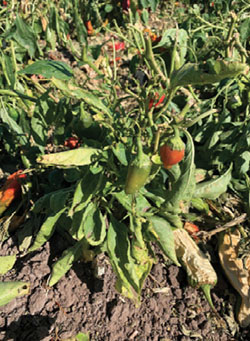
Figure 22. Beet curly top virus, leathery leaves.
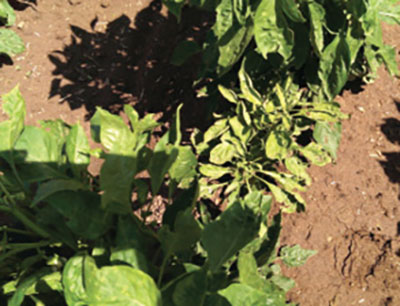
Figure 23. Beet curly top virus, field symptoms.
Control: Because BCTV exists in several strains that vary in host range and in their ability to cause disease, complete resistance is difficult to obtain. However, some cultivars are tolerant of some strains of the virus and can provide some disease control. Controlling weeds and volunteer plants from past susceptible crops is important in reducing the reservoir of virus in the field. If possible, chile should not follow other susceptible hosts, such as tomatoes, beets, beans, potatoes, and spinach, in rotation. Additionally, disease losses are reduced by planting for a thick stand and thinning stunted plants as they become noticeable. Research indicates the severity of curly top in peppers is reduced when the distance between plants is reduced. Insecticide sprays have not proven effective in preventing leafhoppers from transmitting BCTV.
Home gardeners can protect their plants by providing partial shade early in the season. Shading is beneficial in helping control curly top because leafhoppers generally will not feed in shady locations. Shade may be provided by fine mesh cages, which prevent leafhoppers from getting to the plants, or by other plants or structures. Cages should be large enough to keep the foliage from touching the cage material. The cages should be removed later in the season as the plants become less susceptible to the virus.
Tomato Spotted Wilt Virus
Tomato spotted wilt virus (TSWV) has been found periodically in most chile-growing areas in New Mexico, and, if allowed to go unchecked, has the potential for causing significant crop losses. The disease affects late-maturing pods, reducing yield of processing chile.
This virus occurs throughout temperate and subtropical regions and infects a diverse group of plant species, from tomatoes and peppers to peanuts, lettuce, pineapple, and many ornamentals. The virus is transmitted from diseased to healthy plants by thrips. The virus overwinters in perennial weeds, most importantly field bindweed and curly dock.
Symptoms: Symptoms of TSWV are numerous and varied, but the disease is most commonly recognized by the symptoms on the fruit. Both green and red fruit can be infected. Infected green pods display small, off-colored spots. The presence of several of these spots will cause the pod to be rejected for processing. Red fruit exhibit patches of yellow that never turn red. Other fruit symptoms include chlorotic and necrotic spotting, concentric ring patterns, and distortion (Figure 24). Foliar symptoms include general mosaic (Figure 25), chlorotic ring spots, and deformation. In some cultivars, the shoot terminals die and leaves fall from the plant. When new growth develops, it is severely distorted. Plants infected at an early age are severely stunted. All these symptoms are not necessarily present on all plants, and symptom development appears to be most closely linked to cultivar.
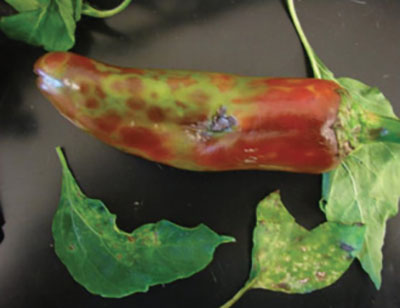
Figure 24. Tomato spotted wilt virus, fruit symptoms.
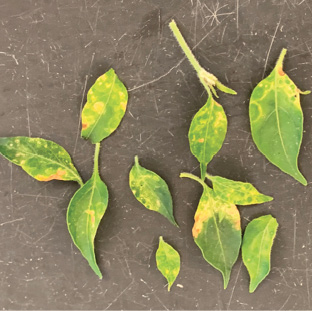
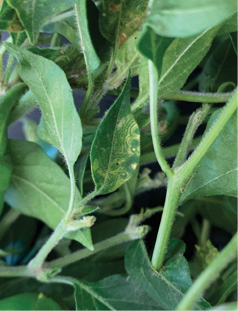
Figure 25. Tomato spotted wilt virus, foliar symptoms.
Control: Because of the wide host range, including many perennial ornamentals and weeds, it is extremely difficult to eradicate this disease. Efforts to control thrips has had little effect on controlling TSWV. While eliminating the disease may not be possible, the incidence and severity of the disease may be reduced by removing all infected plants, rotating crops with non-hosts, and controlling perennial weed hosts. Additionally, growers should check seed companies for the availability of “newly developed” resistant or tolerant cultivars.
Pepper Mottle Virus
Pepper mottle virus (PMV) is an aphid-transmitted disease found in chile fields in New Mexico every year. Symptoms produced by this virus are reminiscent of 2,4-D herbicide injury. Infected plants exhibit misshapen leaves, which become quite puckered (Figure 26), and light and dark patches on the foliage give the plant a mottled appearance. Additionally, the fruit is small and misshapen. The overall effect of the disease is stunted plants with reduced yield. The disease usually occurs in late summer or early fall and reduces the yield of red chile.
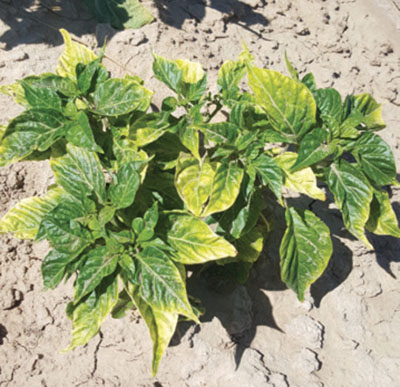
Figure 26. Pepper mottle virus.
This virus is not transmitted through seed and is killed inside infected plants when the plants freeze at the end of the season. However, the virus persists because aphid vectors carry the virus from infected peppers to native perennial, solanaceous weeds such as Datura spp. (jimson weed) and Solanum elaeagnifolium (silverleaf nightshade).
The incidence of PMV depends on the population of aphids and susceptible weed hosts. Typically, severely infected fields are within a few miles of infected weeds. The best control is to avoid weed-infested locations, or control the weeds within several miles of chile fields. Control of the aphid vector is not effective in controlling the disease. No chile cultivars are resistant to pepper mottle virus.
Alfalfa Mosaic Virus
Alfalfa mosaic virus is an aphid-transmitted virus with a wide host range, including alfalfa, tomatoes, lettuce, and potatoes. The primary source for transmission to chile is alfalfa. This virus causes mild stunting and whitish, blotchy leaves, and is sometimes referred to as “calico virus” (Figure 27). In some cases, fruit may be distorted.
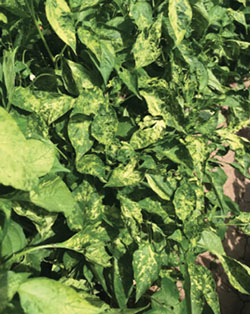
Figure 27. Alfalfa mosaic virus.
Alfalfa mosaic is commonly a problem when chile follows alfalfa in a rotation, or when chile is planted adjacent to alfalfa. The best control, therefore, is to avoid planting chile in these locations.
Cucumber Mosaic Virus
Like beet curly top virus and alfalfa mosaic virus, cucumber mosaic virus has a wide host range, including chile, and exists in numerous strains that vary in their ability to cause disease. This virus is transmitted by aphid species.
Symptoms: Symptoms of this disease are quite variable depending on the infecting virus strain; however, most plants exhibit some degree of “shoestringing” (narrowing of the leaves) in addition to mosaic, stunting, yellowing, and spotting of leaves (Figure 28). Fruit may be small and distorted.
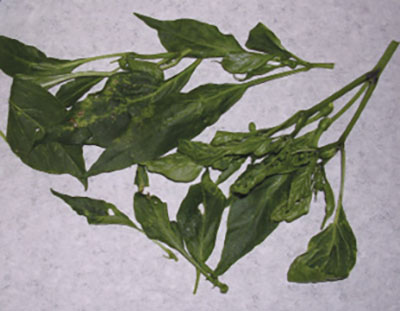
Figure 28. Cucumber mosaic virus.
Control: Crop rotation that avoids other susceptible hosts, such as tomatoes, lettuce, and cucurbits, is recommended to help control the disease. Many ornamental plants used in urban landscaping are also susceptible to the disease and serve as alternative sources of the virus. When possible, planting away from urban areas can reduce the incidence of the disease.
Tobacco Mosaic Virus
Tobacco mosaic virus (TMV) is one of the most common and widespread of all plant viruses. This virus infects numerous plant species, including vegetables and weed species such as mustards, nightshades, and jimson weed. TMV persists and remains infectious for many years in dried crop debris. TMV is readily transmitted by mechanical means, such as hands, cutting tools, and other equipment—another factor that contributes to its success. Workers who smoke tobacco should wash their hand before working in the field. Because of the ease with which this virus is transmitted, it can become a severe problem during greenhouse and field cultivation. Furthermore, the virus is seed-borne.
Symptoms: Symptoms of this disease vary depending on the host and strain of the virus. The most common symptoms on peppers are raised bumps and mottled areas of light and dark green on the foliage Fruit ripens unevenly and is reduced in size.
Control: In most cases, fields planted by direct seed have fewer problems with TMV than fields planted with transplants. This is primarily due to reduced seed handling in comparison with greenhouse-grown transplants; however, it is important to start with disease-free seed. Fields with a history of TMV should be avoided. Because several cultivars of chile possess some resistance to this virus, check for resistant cultivars adapted to your growing region.
Mixed Virus Infections
Several of the above-mentioned viruses may be found together in infected plants; when this occurs, the plant is said to have mixed infections. Mixed infections make diagnosing the particular viruses involved difficult since symptoms become numerous and quite variable. In some cases, mixed infections are more severe than infection by single virus. General control practices used for single virus infections, such as sanitation, weed control, crop rotation, and host tolerance, are also useful for controlling mixed infections.
Pepper Geminiviruses
In recent years, researchers have identified several whitefly-transmitted geminiviruses that infect peppers. Among these “new” viruses are chino del tomate virus, serrano golden mosaic virus, Sinaloa tomato leaf curl virus, pepper mild tigre virus, and Texas pepper virus. These viruses all have similar symptoms but are biologically and genetically distinct. The common symptoms are stunting, curling, or twisting of the leaves; bright yellow mosaic; distortion of leaves and fruit; and reduced yield. Most of the geminiviruses have fairly restricted host ranges among economic crops, but most also infect weeds such as Datura spp. and Malva parviflora (cheeseweed).
These viruses are transmitted by the whitefly, Bemisia tabaci, and are not known to be transmitted either mechanically or by seed in nature. B. tabaci, the sweet potato whitefly, exists in several biotypes that are indistinguishable morphologically, but that vary genetically and with respect to host preference. In the 1980s, a researcher in Arizona discovered an important biotype, identified as the ‘B’ biotype (aka Bemisia argentifolii). The ‘B’ biotype whitefly differs from the original ‘A’ biotype in that it can survive on more hosts and possesses a degree of resistance to commonly used insecticides. These two characteristics have enabled the whitefly to build large populations in greenhouses worldwide, and in fields in the Caribbean and the sunbelt states of the U.S. Studies indicate both biotypes are efficient in transmitting geminiviruses.
Many of these “new” viruses have not yet been identified in the U.S., but are common in pepper-growing areas of Mexico. Some uncharacterized geminiviruses have been identified in tomatoes in Arizona and peppers in Texas. To date, none of these geminiviruses have been identified in New Mexico. However, because New Mexico borders Arizona, Mexico, and Texas, and because of the generally favorable environmental conditions in New Mexico’s chile-growing regions, it is not unreasonable to believe that if geminiviruses are not already here, they soon will be.
Control of geminiviruses is difficult once plants become infected. Management strategies include removing diseased plants and rotating crops with non-host plants. Additionally, controlling perennial weeds that may help the virus and the whitefly survive through the winter is important in reducing the potential for disease outbreaks.
Nematodes
Root-knot Nematode
Root-knot nematode, Meloidogyne incognita, causes damage on peppers worldwide and may be particularly troublesome in warm, sandy soils. Damage can also be severe in greenhouse production of transplants, particularly when unsterilized soil is used.
This microscopic, non-segmented worm is free-living in the soil as a juvenile. When the nematode infects a host, the adult becomes sedentary, feeding in one location in the root. The female nematode becomes pear-shaped and reproduces inside the host tissue, laying her eggs in a gelatinous matrix either inside the root or on the root surface (depending on her location within the root). The eggs are released into the soil and may hatch immediately, or overwinter until the temperature warms in the spring.
Root-knot nematode has an extremely wide host range, attacking over 2,000 plant species, including chile, cotton, cucurbits, alfalfa, tomatoes, and many ornamentals.
Conditions for disease: Damage due to nematodes is generally restricted to soils that are at least 50% sand. Damage by root-knot nematode may be sporadic in the field and is generally associated with sandy areas that may correspond to old drainage systems. In heavy soils, even if plants are infected there may be little or no yield loss. Soil temperatures between 60 and 80°F favor nematode development.
The degree to which losses occur depends largely on the age of the plant when it is attacked. When plants are infected in the seedling stage, the result is often complete loss of production. However, when mature plants become infected, yield loss will depend on the extent of the damage to each particular plant.
Nematodes move slowly through the soil under their own power; however, they can easily be moved by anything that moves soil. Thus, nematodes are disseminated by irrigation water, field equipment, shoes, and infected transplants.
Symptoms: The primary symptom or sign of root-knot nematode is the formation of galls or knots on the root system (Figure 29). These knots form as a result of the nematode’s feeding and residing in the root tissue. The knots range in size from 1/8 to 1 inch in diameter, but tend to be smaller on peppers than on many other hosts. Damage to infected plants results from the inability of water and nutrients to move up through the knots, resulting in above-ground symptoms similar to those caused by many root-infecting pathogens or environmental factors that reduce water uptake by the plant. Infected plants are generally stunted and have fewer small, pale green or yellowish leaves (Figure 30). The plant may wilt during periods of high temperatures. Infected plants produce fewer fruit of poor quality.
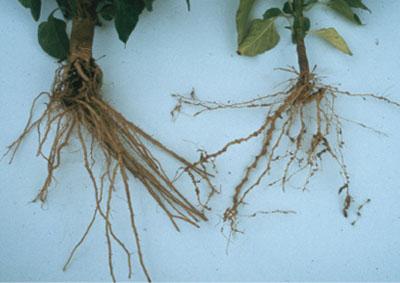
Figure 29. Root-knot nematode, galls on root system.
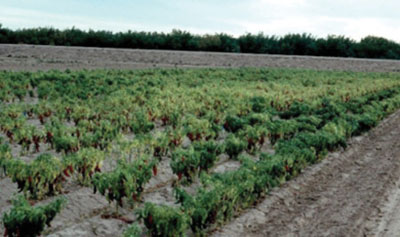
Figure 30. Root-knot nematode, field symptoms.
Control: Transplants should be grown in soil that has been sterilized or in soilless potting mixes. The best nematode control is by soil fumigation. Before using any of these materials, it is important to check the label for use and restrictions and follow instructions carefully. Other control methods include late-season (late fall and early winter) cultivation of infested fields. While no chile cultivars are totally resistant to root-knot nematodes, current research efforts continue to search for better cultivars.
Abiotic Diseases (caused by non-infectious disease agents)
Blossom-end Rot
Blossom-end rot is a fruit disorder associated with inconsistent watering and a calcium deficiency. Other factors contributing to the occurrence of this disorder include root pruning, excessive soil salinity, and heavy applications of nitrogen fertilizers.
Symptoms: The disorder typically first appears as a small, water-soaked, light-brown spot on the blossom end of immature fruit. The diseased area enlarges and becomes sunken and leathery in appearance (Figure 31). Infected fruit often matures prematurely. The sunken lesions caused by this disorder are prime locations for attack by secondary microorganisms, particularly fungi and bacteria. Thus, the diseased tissue may appear black or soft and watery.
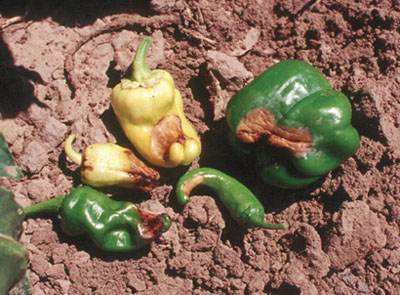
Figure 31. Blossom-end rot.
Control: This disorder is best controlled by providing sufficient water to prevent water stress. Soil amendments such as lime or calcium fertilizations have been effective in reducing the incidence of blossom-end rot in some situations, but successful results are sporadic. Likewise, the application of foliar sprays of calcium salts have given erratic results.
Sunburn
Sunburn occurs on pepper fruit that is exposed directly to intense sunlight. This type of damage often results when shaded fruit is suddenly exposed to the sun. Defoliation or prolonged wilting caused by other diseases, such as Verticillium wilt, root-knot nematodes, and bacterial leaf spot, or by salt and wind injury, can contribute to problems of sunburn.
The affected area is light-colored, soft, and wrinkled. The damaged tissue eventually turns whitish-tan and papery in texture (Figure 32). Sunburned skin is often subsequently attacked by secondary fungi and bacteria, which then contribute to further decay.
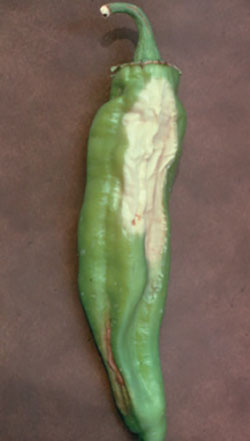
Figure 32. Sunburn.
Salt Injury
Excessive salts in the soil or irrigation water can become problematic in some chile fields. Likewise, heavy application of fertilizers, especially if placed too close to seed or transplants, can cause similar injury. Plants of all ages are susceptible to salt injury; however, mature plants may be more resistant to serious injury. The damage on young seedlings can be devastating as plants are severely stunted or, in many cases, killed (Figure 33). Seedling injury can result in sudden loss of the stand (Figure 34). Mature plants exhibit symptoms of burned root tips, marginal leaf necrosis, and wilt. Additionally, the hypocotyl may become desiccated, and severely affected plants may shed their leaves.
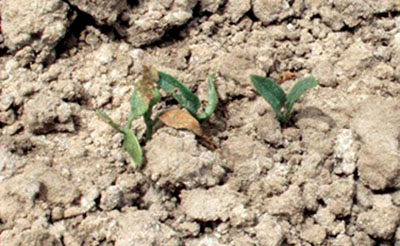
Figure 33. Salt injury.
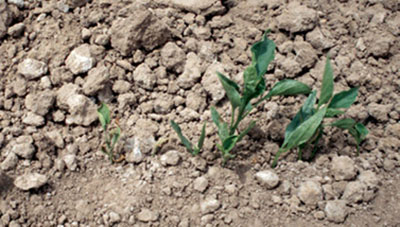
Figure 34. Salt injury.
Symptoms often develop after light rains, which can wash salts into the root zone. Although it is not possible to eliminate problems due to excess salts, the damage may be minimized by a few cultural practices. Furrow-irrigated plants should be planted on the side of the bed because furrow irrigation tends to push salts to the center of the row. Conversely, drip-irrigated plants should be planted in the center of the bed because drip irrigation will tend to push salts to the sides of the row. Regardless of the irrigation method, enough water should be applied with each irrigation to help leach the salts down into the soil. Other methods to reduce seedling damage include planting in pre-irrigated beds and capping the row.
Wind Injury
Excessively strong winds can damage chile plants in several ways. Damage can result from rapid desiccation of the foliage. When this occurs, leaves may wilt and eventually dry up. Severe wind injury may lead to dead limbs as a result of desiccation. Wind injury may also result in physical damage to the foliage from cracks or tears that occur during windstorms. This damage can be intensified with blowing sand, which adds to the damage by the formation of necrotic spots. Damaged tissue may turn reddish-brown, chlorotic, or necrotic as the plant responds to the injury. Additionally, plants may snap off at the soil line where callus tissue forms as a result of wind whipping the plant back and forth (Figure 35).
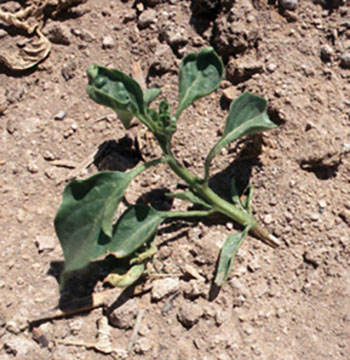
Figure 35. Wind injury.
Windbreaks planted around the edge of field or in a few rows within the field may provide protection for plants growing in high wind areas.
Hail Injury
Hail can result in pock-marked foliage and fruit (Figure 36), similar to injury created by wind-blown sand. The damaged tissue may become chlorotic or necrotic in response to the injury. A severe hail storm may result in a compete loss of foliage (Figure 37).
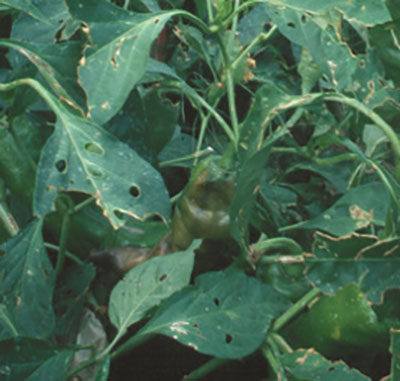
Figure 36. Hail injury to foliage.
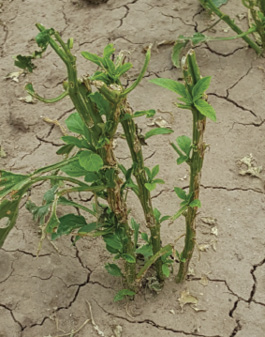
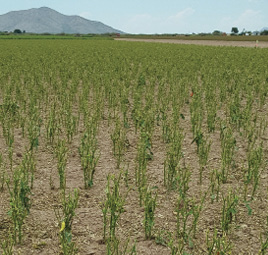
Figure 37. Hail injury, complete loss of foliage.
Herbicide Injury
Herbicide injury can occur on chile plants as a result of spray drift from target weeds near the chile, or from the use of contaminated spray containers. Even a small amount of the chemical can cause severe injury.
The type of damage that occurs depends on the herbicide. One of the most common herbicides that damage chile is 2,4-D. 2,4-D and related compounds such as 2,4,5-T and MCPA cause severe distortion of the foliage Developing leaves become narrow with raised veins. Older leaves are also distorted and the leaf margins may become wavy. Leaves receiving a high dosage of the chemical develop into filiform leaves (i.e., leaves composed almost entirely of midrib, with little tissue development). Premature flower drop and the development of adventitious roots along the lower stems are also symptoms of 2,4-D injury.
Nutrient Deficiencies and Toxicities
This is one of the more difficult problems to diagnose because symptoms caused by nutrient deficiencies or toxicities are similar to symptoms caused by many other abiotic and biotic (parasitic) diseases. Additionally, plants often suffer from deficiency of more than one nutrient. Plants stressed from nutrient problems are also more susceptible to other disease organisms, and these pathogens may interfere with the diagnosis of the primary problem.
Plant nutrients may be required in relatively large amounts (major elements such as nitrogen, phosphorus, and potassium) or in very small amounts (minor elements such as iron, boron, and zinc). Thus, determining individual nutrient problems depends on the plant’s need for each element. In many cases, a plant tissue analysis run in the laboratory may be required to determine nutrient deficiencies and toxicities. However, diagnosis of some nutritional problems may be possible from the plant’s appearance. For example, nitrogen-deficient plants grow poorly and are pale green or yellow in color, while plants lacking sufficient iron have young leaves that are severely chlorotic, but the veins remain green (interveinal chlorosis). Toxicities related to nutrients result from an excess of the chemical and often result in burning of the roots or foliage.
Stip
Stip is a disorder that is attributed to a combination of physiological and abiotic stresses that most often include hot temperatures and nutrient imbalances such as calcium deficiency. Increased nitrogen applications and shading have also been found to increase severity and incidence of the disorder.
Symptoms: Symptoms of stip include orange-red areas inside the pepper pods, which are followed by depressed, oval, dark-brown to black lesions that move toward the pod exterior (Figure 38). Symptom expression is more noticeable during fruit ripening and post-harvest periods. Unlike most other diseases and disorders, there are no foliar symptoms associated with stip.
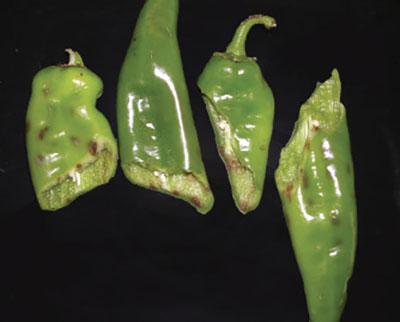
Figure 38. Stip.
Control: This disorder is best controlled by selecting resistant cultivars. Repeated foliar calcium applications may help reduce the disorder; however, it may not be economically feasible.
Summary
Many different infectious and non-infectious diseases can cause problems in the production of chile peppers. While some of these diseases have specific control practices, several general control strategies apply to many and should be used in an overall disease management program. These strategies include:
Choose cultivars carefully. When possible, select cultivars resistant to diseases that commonly occur in your area. Also, choose cultivars that are well adapted to your growing region.
Purchase high-quality seeds or transplants. Starting with good, quality plant material is an important step in establishing a good stand of chile. High-quality seeds will have a high germination rate and will establish faster, helping reduce problems associated with seedling disease. Be sure transplants are free of diseases, or pests such as root-knot nematode, before planting in the field.
Select the best field possible. Avoid fields with a history of disease problems or that possess other negative characteristics, such as poor drainage, high salt content, are close to trees and buildings, or undesirable crops.
Use crop rotation. Never plant chile back-to-back in the same field. Chile produces best and has the fewest disease problems when planted no more than once every 3–4 years in the same field. Rotations with crops such as corn, sorghum, and small grains help prevent buildup of many chile disease agents. If possible, avoid planting chile where crops susceptible to chile diseases, such as cotton, alfalfa, and other vegetables, were planted the year before. In addition, allowing a field to be fallow periodically can reduce a buildup of some pathogens.
Plant on raised beds. This cultural practice is important for controlling many diseases favored by wet soils. Raised beds provide better drainage. Cultivating so that soil is thrown to the center of the row throughout the growing season can reduce the incidence of chile wilt. Also, plant beds according to the type of irrigation method to help reduce the effect of excessive salts.
Provide plants with an even supply of water. Avoid drought and flood situations that stress plants, which makes them susceptible to diseases such as wilt and blossom-end rot. Irrigate deeply to leach salts from the root zone, but try to avoid having water stand in the field for longer than 6 hours.
Control perennial weeds. Perennial weeds serve as reservoirs for many plant pathogens—particularly plant viruses. Removing alternate hosts can help reduce not only the amount of the pathogen present each year but also the resident insect population that can transmit the disease.
Acknowledgments
The authors expresses sincere appreciation to Dr. Emroy L. Shannon and Dr. Donald Cotter, Professors Emeritus of New Mexico State University; and Dr. Richard B. Hine, Professor Emeritus of the University of Arizona, for their contributions to this manuscript.
For Further Reading
H-230: Growing Chiles in New Mexico
https://aces.nmsu.edu/pubs/_h/H230/welcome.html
H-235: Postharvest Handling of Fresh Chiles
https://aces.nmsu.edu/pubs/_h/H235/welcome.html
H-236: Postharvest Handling of Dehydrated Chiles
https://aces.nmsu.edu/pubs/_h/H236/welcome.html
H-258: Field Production of Organic Chile
https://aces.nmsu.edu/pubs/_h/H258/welcome.html
Acknowledgement: The author expresses sincere appreciation to Dr Emroy L. Shannon and Dr. Donald Cotter, Professors Emeritus of New Mexico State University and Dr. Richard B. Hine, Professor Emeritus of The University of Arizona, for their contributions to this manuscript.
Original Publication: Natalie P. Goldberg. Published August 1997.
 |
Phillip Lujan is the program manager and diagnostician for NMSU’s Plant Diagnostic Clinic. He received his B.S. and M.S. in agricultural biology with a minor in molecular biology from NMSU. He is currently researching the potential use of pecan byproducts on chile peppers for improved soil-borne disease management. |
 |
Natalie P. Goldberg is a Distinguished Achievement Professor in the Department of Extension Plant Sciences at NMSU. She earned her B.S. in ornamental horticulture from Cal Poly Pomona and her M.S. and Ph.D. in plant pathology from the University of Arizona. Her Extension program focuses on plant health management, plant disease identification, and crop biosecurity. |
To find more resources for your business, home, or family, visit the College of Agricultural, Consumer and Environmental Sciences on the World Wide Web at pubs.nmsu.edu
Contents of publications may be freely reproduced for educational purposes. All other rights reserved. For permission to use publications for other purposes, contact pubs@nmsu.edu or the authors listed on the publication.
New Mexico State University is an equal opportunity/affirmative action employer and educator. NMSU and the U.S. Department of Agriculture cooperating.
Revised July 2021, Las Cruces, NM


